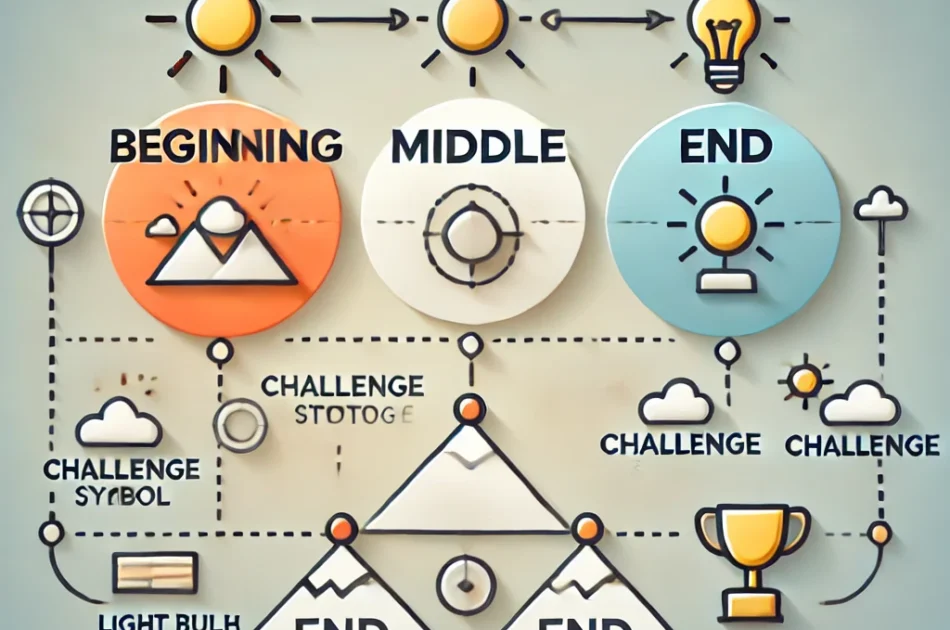Storytelling in Marketing
How to Connect Emotionally with Your Audience

Brands compete fiercely for consumers' attention in today's harsh digital environment.Traditional advertising tactics are no longer enough to win over customers. To stand out, businesses need to focus on building emotional connections with their audience—and that’s where storytelling in marketing shines.
Storytelling isn’t just about narrating tales; it’s a strategic way to create memorable and relatable experiences. A compelling story can spark emotions, foster trust, and inspire action, making it one of the most effective tools in a marketer’s arsenal.
In this blog, we’ll explore the importance of storytelling in marketing, the psychology behind its success, and actionable tips to craft captivating narratives for your brand.
Why Storytelling Matters in Marketing

Humans are hardwired to respond to stories. For centuries, stories have been a powerful medium to share knowledge, convey emotions, and connect with others. In marketing, storytelling is crucial since it:
Building Emotional Connections:
Stories create empathy. When a brand shares a relatable or inspiring story, it resonates with the audience, making them feel understood and valued.
Enhancing Brand Recall:
Stories are more likely to stick in people's minds than statistics.. A well-told story leaves a lasting impression, helping your brand stay top of mind.
- Differentiating Your Brand:
Storytelling highlights your brand's distinct personality, values, and mission, making it stand out in a crowded market. - Driving Engagement:
Stories captivate attention. Whether through a video, blog, or social media post, storytelling increases the likelihood of your audience engaging with your content.
The Psychology Behind Storytelling in Marketing

Understanding why storytelling works begins with psychology. Here are the key reasons storytelling resonates so deeply with audiences:
- Activates Emotions:
Stories stimulate the release of oxytocin, also known as the “love hormone.” This creates a sense of connection and trust with the storyteller or brand. - Triggers Memory Formation:
The brain processes stories in a way that makes them easier to remember. By combining facts with emotions, storytelling ensures that your message sticks. - Engages Multiple Senses:
A good story paints vivid mental pictures, engages the imagination, and evokes sensory experiences, making the audience feel like they are part of the narrative. - Encourages Action:
Stories inspire people to take action. Whether it’s making a purchase, signing up for a newsletter, or sharing content, a well-crafted story can nudge your audience toward a desired outcome.
How to Create Effective Stories for Your Marketing
- Understand Your Audience
-Know their pain points: What challenges or problems do they face?
-Identify their desires: What motivates them? What do they aspire to achieve?
-Speak their language: Make use of language that appeals to your audience.
Example: If your audience is small business owners, share stories of other entrepreneurs who overcame obstacles and achieved success. - Define Your Brand’s Core Message
The mission and values of your brand should be reflected in your story.Ask yourself:
-What does your brand stand for?
-What unique value do you offer?
-What emotions do you want to evoke?
Example: Nike’s storytelling revolves around perseverance and the triumph of the human spirit, encapsulated in their slogan, “Just Do It.” - Follow the Classic Story Structure
A compelling story often follows a structure:

- Beginning: Introduce the main character and the challenge they face.
- Middle: Highlight the journey or struggle to overcome the challenge.
- End: Show the resolution and the transformation that occurred.
Example: A skincare brand could share the story of a customer struggling with acne and how their product helped boost their confidence.
- Show, Don’t Just Tell
Use visuals, metaphors, and sensory language to make your story more engaging. Instead of saying, “Our product saves time,” illustrate a scenario where someone uses the extra time to spend with family.
- Use Authenticity and Relatability
Audiences value honesty. Tell genuine tales about your company, staff, or clients.Highlight imperfections—it makes your brand more human and relatable.
Example: Dove’s “Real Beauty” campaign showcased real women with diverse body types, resonating with a global audience.
- Leverage Different Formats
-Videos: Share powerful, emotional stories through video content.
-Social Media Posts: Use short, impactful narratives to engage your followers.
-Case Studies: Show how your product or service solved real-life problems.
-User-Generated Content: Feature your customers’ stories to build trust.
Examples of Successful Storytelling in Marketing

- Coca-Cola’s “Share a Coke” Campaign
Coca-Cola connected emotionally by personalizing their bottles with people’s names. This simple gesture sparked joy, encouraged sharing, and created countless personal stories.
- Airbnb’s User Stories
Airbnb highlights the stories of hosts and travelers, showcasing meaningful experiences and connections made possible through their platform.
- Always’ “Like a Girl” Campaign
By challenging stereotypes and empowering women, Always created a deeply emotional and impactful campaign that resonated worldwide.
The Role of Technology in Storytelling
In today’s digital age, technology enhances storytelling by making it more interactive and immersive.
- Virtual Reality (VR): Transport your audience into another world, like Ikea’s VR experience for designing rooms.
- Social Media Tools: Platforms like Instagram and TikTok make it easy to share short, impactful stories.
- Data-Driven Personalization: Use analytics to tailor stories to your audience’s preferences.
Measuring the Success of Your Storytelling Efforts
To gauge the effectiveness of your storytelling campaigns, track these key metrics:
- Engagement: Monitor likes, shares, comments, and video views.
- Conversions: Measure how many people take action after engaging with your story.
- Brand Awareness: Use surveys or tools like Google Trends to assess how well your story resonates.
Final Thoughts
Storytelling in marketing is more than just a trend—it’s a necessity. In a world flooded with advertisements, a genuine, emotionally driven story can make your brand unforgettable.
By understanding your audience, crafting authentic narratives, and leveraging the right tools, you can create stories that inspire, engage, and drive results.
So, start sharing your brand’s story today. The people in your audience are eager to engage with you.
